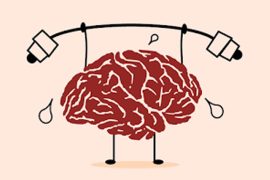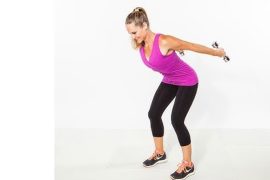For beginners and professionals weight training in the gym is highly necessary to build the required strength. With minimal strength, it will certainly be a daunting task to carry out any day-to-day or sporting activities. However, in order to attain those strengths, there is a possibility to land up with a workout injury, which is inevitable to happen during any extreme weight training exercises. These injuries can occur due to numerous factors, including poor conditioning, errors in technique, structural immaturity of both soft tissue and bone, poorly periodised training and a lack of variety that can result in overuse injuries or overtraining.
Common Causes of Workout Injuries
An overuse injury in any type of muscle or joint, such as tendinitis or a stress fracture, that is caused by repetitive trauma should be observed with treatment. Any overuse will hamper the nature of the occurred injury. There are some of the causes of workout injuries that you should take utmost care during every workout.
- Errors in Training – Training errors can occur when you take on too much physical activity too quickly. Going too fast, exercising for too long or simply doing too much of one type of activity can strain your muscles and lead to an overuse injury.
- Errors in Technique – Improper technique also can take its toll on your body. If you use a poor form as you do a set of strength training exercises, swing a golf club or throw a baseball, for example, you may overload certain muscles and cause an overuse injury.
Ways to Prevent Workout Injuries
- Using Proper Gear – Whether you are starting a new activity or you have been playing a sport for a long time, consider taking lessons. Using the correct technique is crucial to preventing overuse injuries. Also, make sure you wear proper shoes for any weight training or physical activity.
- Pace yourself – If you are starting a new fitness program, avoid becoming a weekend warrior. Compressing your physical activity for the week into two days can lead to an overuse injury. It’s also a good idea to take time to warm up before physical activity and cool down afterwards.
- Increase your Activity Level Gradually – When changing the intensity or duration of physical activity, do so gradually. For example, if you want to increase the amount of weight you are using while strength training, increase it by no more than 10 per cent each week until you reach your new goal.
- Indulge Cross-Training – Indulging cross-training in your daily workout routine will help you to build variety into your fitness program. Incorporating a variety of low-impact activities such as walking, biking, swimming and water jogging helps to prevent overuse injuries by allowing your body to use different muscle groups and not overload any one particular group.
Some of the Common Workout Injuries That You May Witness
1.) Disc Herniation – Disc herniation is one of the workout injuries that is caused by poor lifting mechanics. Possible symptoms of a disc herniation can include localized back pain as well as numbness or tingling those travels down into the legs. Another possibility is degenerative disc disease, which is a common term that doctors use to describe excessive wear and tear on the spine. Both disc herniations and degenerative disc disease can be exacerbated by chronic poor posture, especially when lifting and exercising. By placing your spine in the correct position, you will experience the least amount of stress on your discs and spine, and your core muscles will be able to engage more effectively.
2.) Achilles Tendonitis – Achilles tendonitis is one of the workout injuries which is common for runners and is indicated by pain in the back part of the heel up to the Achilles tendon. These symptoms can linger and are often exacerbated by running, especially uphill or on the sand. Tendon problems frequently take a long time to heal. If you have Achilles tendonitis, the first step is to rest to decrease the inflammation, allowing the tendon to calm down. Then, gradually build up the strength in the calf muscle by doing heel raises.
3.) Slap Tear – Slap tear injury is one of the workout injuries that can occur from both acute trauma and repetitive stress from motions like throwing or overhead lifting. Be careful of workouts and exercises that repetitively stress your arms overhead or when fully rotated. If you can’t raise your arm without pain, feel that one or both shoulders are weak, or experience popping/catching in certain movements, visit a health practitioner or physiotherapist to get a more complete diagnosis. Some labral tears can heal over time, but some require more aggressive treatments like rehab or surgery.
4.) Tennis Elbow – Tennis elbow is also one of the workout injuries which includes an ache on the outside of your elbow. You need to rest at first to calm down the inflammation before gradually strengthening your gripping muscles. You can alleviate some of the symptoms by regularly massaging and stretching the muscles, which can help increase blood flow. As the symptoms calm down, you can gradually increase the workload again with wrist exercises. Make sure that you don’t push through pain, which may exacerbate your symptoms and make things worse.
5.) Knee Injuries – Knee injuries are also one of the workout injuries which is particularly vulnerable joint to damage from weightlifting, particularly squats or any exercise which puts sudden extra pressure on the leg. There is some truth to this as the knee is a relatively inflexible part of the body, with limited options for movement. Sudden, jerking movements executed without proper form can easily tear the connective tissue in the knee or stress the joint affecting your balance and comfort. This can be prevented by ensuring your feet are planted squarely before any exercise and lowering yourself evenly, with equal pressure on each leg.
6.) Back Strain Injury – This injury is one of the workout injuries that every weightlifter experiences if moves have not been performed correctly. Almost every weightlifting exercise will put increased and unfamiliar weight on the back which is the frame supporting all the muscle groups in your upper body. Deadlifts, bench presses, rows and curls can all result in strain on muscles and tendons, even torn ligaments in severe situations. The form is essential while performing weight lifting exercises, and you should never begin a rep without confirming your back is straight, supported and engaged. Proper stretching before and after a set can also increase the elasticity of your back and reduce any unpleasant strains.
Disclaimer:
The information contained in this article is for educational and informational purposes only and is not intended as a health advice. We would ask you to consult a qualified professional or medical expert to gain additional knowledge before you choose to consume any product or perform any exercise.








